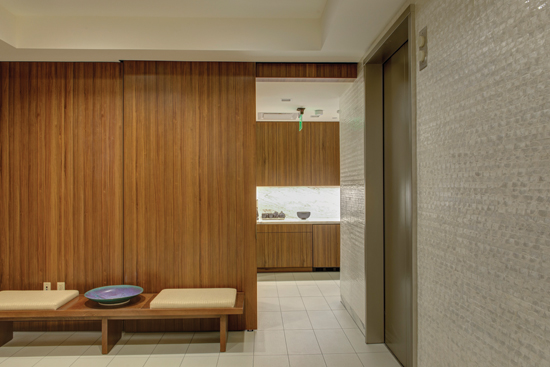Open Sesame: Specifying Top-Hung Sliding Hardware Systems
A History of Sliding Architectural Hardware
Older buildings around the world often have doors that slide on heavy metal tracks, usually flat or angled. These early, top-hung sliding door assemblies, originally developed for use in horse stables, agricultural facilities, and other high-function, low-design exterior openings, were rudimentary and occasionally dangerous. The door hangers—wheel assemblies also called trolleys or trucks usually held by heavy bolts and attached to the wood or metal doors—would at times unseat from the tracks, with calamitous consequences. To prevent such incidents, in the late 1920s architects began specifying enclosed tracks, also called box tracks, which guided the trolleys better and kept occupants safe.

Photo courtesy of Hawa Americas Inc.
Sliding hardware units for full-height sliding doors with dark wood panels appear visually flush to the ceilings thanks to fully concealed tracks.
With a new and safe approach that many manufacturers promoted over the next decades, the popularity of “modern sliding hardware” began to grow. Applications emerged for building interiors—not just in stables and mills but also in schools, office buildings, shops, cultural facilities, and more. Incremental design improvements yielded cleaner, more reliable operations because the tracks did not become a resting place for dirt and dust. The rigid, rectangular steel sections also boosted the weight capacities, leading to more slender, lighter track assemblies.
Interior partitions date back earlier, but they flourished in the modern architecture era of the 1950s and 1960s. Fabricators experimented with lighter steel, aluminum, and other materials for the hardware, and the indoor panels could be made with glass, allowing more light and transparency into building interiors. Industrialization led to a new era of convenience, accessibility, and adaptability in the interiors, thanks to a new generation of sliding hardware systems.









